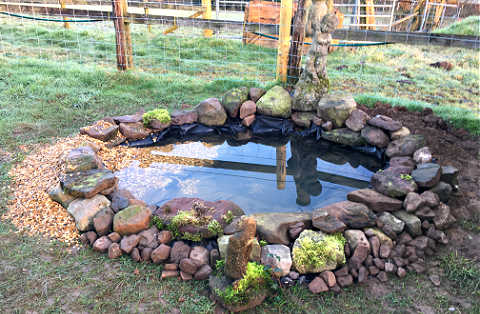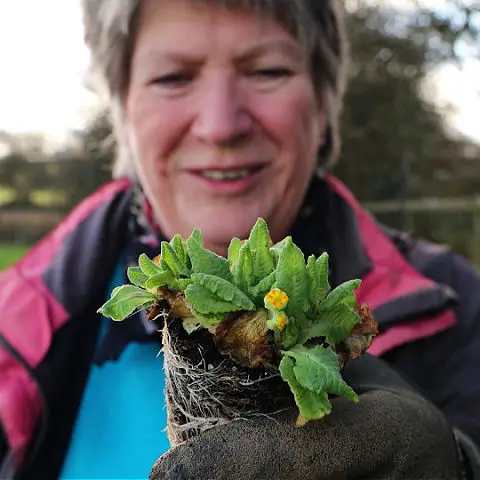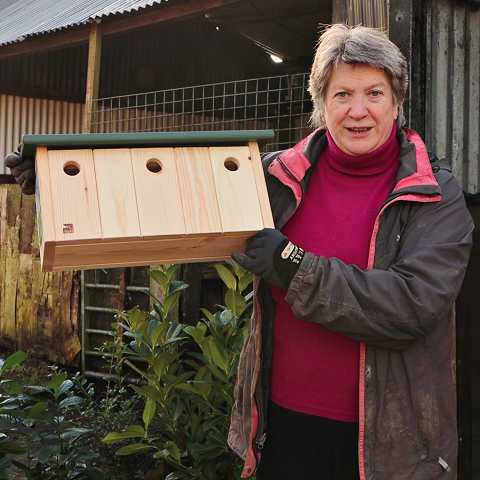Wildlife garden jobs in February
Much of our wildlife is still hidden and hibernating in February. However, there are garden jobs we can do to support them when they awake. Not all of our wildlife is attractive or appealing, but it all has a role in our yards and gardens. Our task as gardeners is to balance our desire for an attractive and productive space with the needs of local wildlife.

Wildlife in decline
The wildlife population continues to decline at an alarming rate. The removal of hedgerows, fields of monoculture crops, chemical fertilizers, pesticides and herbicides have all taken their toll. But as gardeners, there are things we can do to support the local wildlife population. Simply by having a garden and growing a variety of plants, you offer habitat to some wildlife.
Urban gardening
In urban areas, the role of our gardens is even more vital. Individual gardens may not provide everything our wildlife needs. But the accumulative impact of thousands of smaller garden spaces is effective in providing green corridors for the movement and support of wildlife.
To be most effective, gardens should not be completely enclosed and isolated. Small spaces below fences and gaps in walls, often for a gate, thus allowing the movement of wildlife from area to area. Removing artificial grass and also allowing a scruffy corner to develop helps significantly.
Be an untidy gardener
Do not be in hurry to tidy up dead stems and plant material from your garden. They are ideal hiding places for many beneficial insects. The hollow stems of many plants make the perfect home for them, so leave them in situ until later in spring, to give the insects time to wake up and leave.
To reduce the potential slug population this summer, now is a good time to clear their man-made hiding places. Make sure that you have cleaned and put away tools, pots and seed trays. Move bags of compost or rubbish and remove any slugs hiding beneath them.
Compost heaps
Do not turn the compost heap. It can contain hibernating wildlife, like hedgehogs. Additionally, turning it when cold and wet offers little advantage. There are plenty of other jobs to support wildlife in the garden in February.
Feed wild birds

If you put food out for birds in the autumn and winter, continue to feed them until spring when the numbers of insects and other natural bird food is in plentiful supply in your garden. There can be food shortages for wild birds all year round, but it is important to offer the appropriate types of food at the right time of year.
In February, wild birds will appreciate most types of feed. But as the breeding season gets underway, it is important not to put out food that might damage young chicks. Therefore, during the spring or summer months, do not put out hard, dry food, fats, large chunks of bread or loose peanuts.
Make a wildlife pond

February is an ideal time to create a wildlife pond in your garden. It does not need to be large, it could be a washing up bowl sunken into the ground. Ensure that it provides a way for small animals to climb out of it, should they fall in. A large stone or pile of stones will usually suffice.
Plant a hedge or hedgerow
A hedge is usually a row of plants of the same species, planted in a line. As the individual plants grow, they spread to meet the plant next to them. A hedgerow is the same thing, but uses different species of plants.
A hedge can look neat and tidy, it can be clipped to form straight lines or curves. Training and clipping plants into shapes is called Topiary.
Whereas hedgerows appear more informal with a mixture of colors and textures. The combinations of foliage, flowers, berries and nuts provide food for insects, birds and other wildlife.
Both hedges and hedgerows will provide nesting places for birds and shelter for other wildlife. They provide maximum benefit when they link one area of woodland to another. But wherever a row of suitable trees and shrubs is planted, it will help wildlife to thrive.
Winter is an ideal time to plant hedges and hedgerows. As wildlife garden jobs go, this is a good one to do in February as bare root plants are available. Bare root plants are usually cheaper and more cost-effective than buying potted plants in large numbers. Very young hedging plants are called whips. There is a very simple way to plant whips quickly.
Plant flowers for wildlife in your garden

Wildflowers like primroses and cowslips are grown from seed in the autumn. Alternatively, they are bought as plug plants and planted in late winter and early spring.
Snowdrops and bluebells are usually purchased in the green, which means buying them as they are growing, often just after they have flowered.
However, it is not only wildflowers that support our wildlife. Almost all plants offer some kind of benefit for wildlife in our gardens. From food to shelter, wildlife adapts itself to the local environment and the plants available. Thus, by growing a wider variety of plants, a more varied environment is offered for wildlife.
A nice wildlife garden job in February is to look through plant catalogs and choose a wider variety of plants for your garden.
Provide bird boxes for nesting birds

Another wildlife garden jobs in February is to look at nest boxes in your garden. In the UK, February 14-21 is National Nest Box Week. It is a reminder for gardens with nesting boxes to clean them ready for a new nesting season. Additionally, the week is used to promote the installation of new nest boxes.
Choose nest boxes suitable for bird species in your area. The RSPB, the Royal Society for the Protection of Birds, offers a selection of nest boxes to purchase. If you choose to paint or protect them with a preservative, ensure that it is non-toxic for wildlife.
Follow guidelines for the best height and location for new nest boxes and do not return to them once fixed in their chosen site until next winter. It is very tempting to have a look inside them to see whether they are occupied. But it will become obvious fairly quickly when birds have decided to use the box for nesting in.
Organizations that support wildlife
Many organizations are dedicated to promoting and supporting our wildlife. In USA, for example, The Nature Conservancy supports woodlands among many other projects. In the UK, The Woodland Trust supports native wildlife through woodland programs. Additionally, there are specialist non-profit organizations and charities that promote the health and well-being of wildlife animals and their habitats.
Further projects for the garden this month
Start your vegetable garden by finding out what to sow in February
Enhance the garden with flowers to sow in February
- Romantic garden ideas in June - June 30, 2024
- Mulching, grow with less effort and less watering - June 26, 2024
- Slug Control – How to get rid of slugs in garden - June 26, 2024

I have a widlife pond. I cut the vegetation once a year. I bought insect hotels last year and the solitary bees started visiting and plugging the canes. We have lots of newts too and often get beautiful dragonflies. It’s not a big garden but I love it. I get up early and its so peaceful without the power tools, loud music and car noises. I can’t feed the birds anymore as the neighbour complained about the noise waking them up. The hedgehog has woken up I think from the dogs sniffing around his trail. Happy days
It sounds like you have lots of wildlife in the garden. I’m looking forward to seeing dragonflies visiting our ponds.